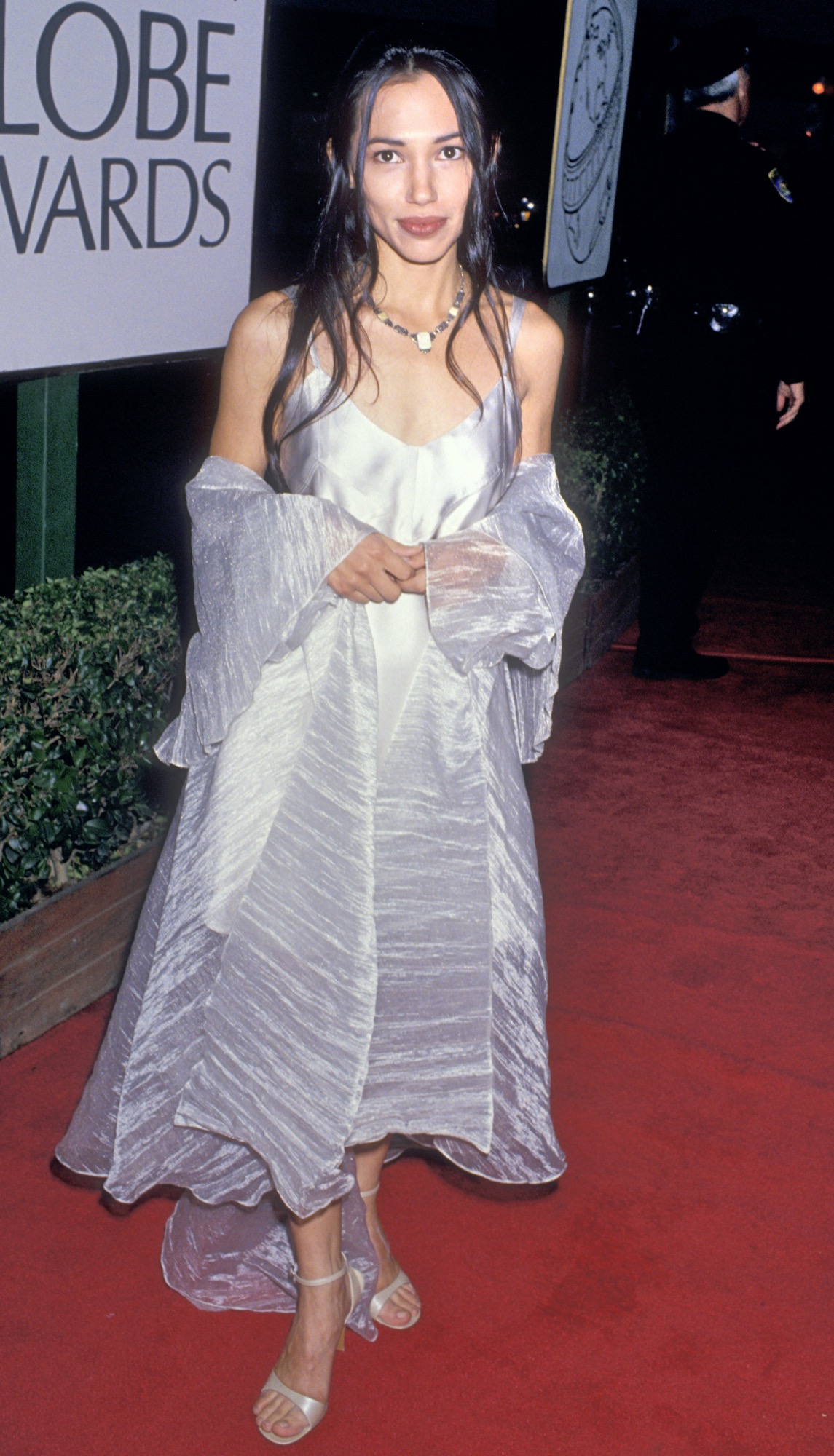
- Golden Globe Awards
1994: Irene Bedard – Finally, a Real Native American

Whenever Hollywood played “Cowboys and Indians,” it did not look good for the Indians.
Sure, they were written into scripts. But mostly as props, as evil, animal-like predators who — for no apparent reason — attacked “good” White folks trekking west, raping their women and scalping everybody else. They had to storm bare-chested toward the heroic soldiers’ guns, or ride around circled wagons, yelling wildly and acting as convenient shooting targets for the brave Westerners.
Also, those Indians were almost never played by Native Americans. In early Hollywood, you had a casting chance as long as you were dark-haired and suntanned, such as Anthony Quinn in The Plainsman (1936).
Even leading roles went to non-Indians, from Burt Lancaster in Apache (1954) and Charles Bronson in Chato’s Land (1972) all the way to Johnny Depp in Lone Ranger (2013). Jeff Chandler even had beautiful blue eyes as Apache leader Cochise in Broken Arrow (1950).
Audrey Hepburn played the indigenous in The Unforgiven (1960), and Donna Reed played the copper-skinned Sacagawea in the Lewis and Clark film The Far Horizons (1955).
In Winchester ’73 (1950), meanwhile, a Native American called Young Bull seriously uttered the words: “All White men are thieves. In peace, they steal our land; in war, they steal our women. And you are a White man!” This “Indian” was none other than a White man named Rock Hudson.
But then, finally, in 1994, came a long overdue change. And Golden Globe voters were the only awards body to recognize it. The lead role in the television film Lakota Woman: Siege at Wounded Knee was actually played by a Native American woman, Irene Bedard.
She was born in 1967 in Anchorage, Alaska, ofIñupiat and French Canadian/Cree (Métis) heritage, and an enrolled member of the Native Village of Koyuk in Alaska. In 1985, Bedard graduated from high school in Anchorage, and went on to study musical theater at the University of the Arts in Philadelphia, Pennsylvania.
In 1994, Bedard was cast as Mary Crow Dog in Lakota Woman: Siege at Wounded Knee, which depicts a young woman’s coming-of-age journey as she learns about the infamous 1890 massacre of Native nations citizens by U.S. soldiers at Wounded Knee, South Dakota, and eventually joins the American Indian Movement, taking part in the 1973 occupation of Wounded Knee.
Bedard’s first TV role led to a Golden Globe nomination the following year, 1995. The same year she became known as the voice of the young heroine in Disney’s animated film Pocahontas, which led to the 1998 sequel Pocahontas II: Journey to a New World and a multitude of other performances, including in the under-appreciated Smoke Signals (1998) and Steven Spielberg’s TV miniseries Into the West (2005).
Her exposure as a Golden Globe nominee might have also led to People Magazine’s decision to include Bedard in their 1995 list of the “50 Most Beautiful People.”
One of Bedard’s upcoming roles will be as Yagoda in the TV series Avatar: The Last Airbender.